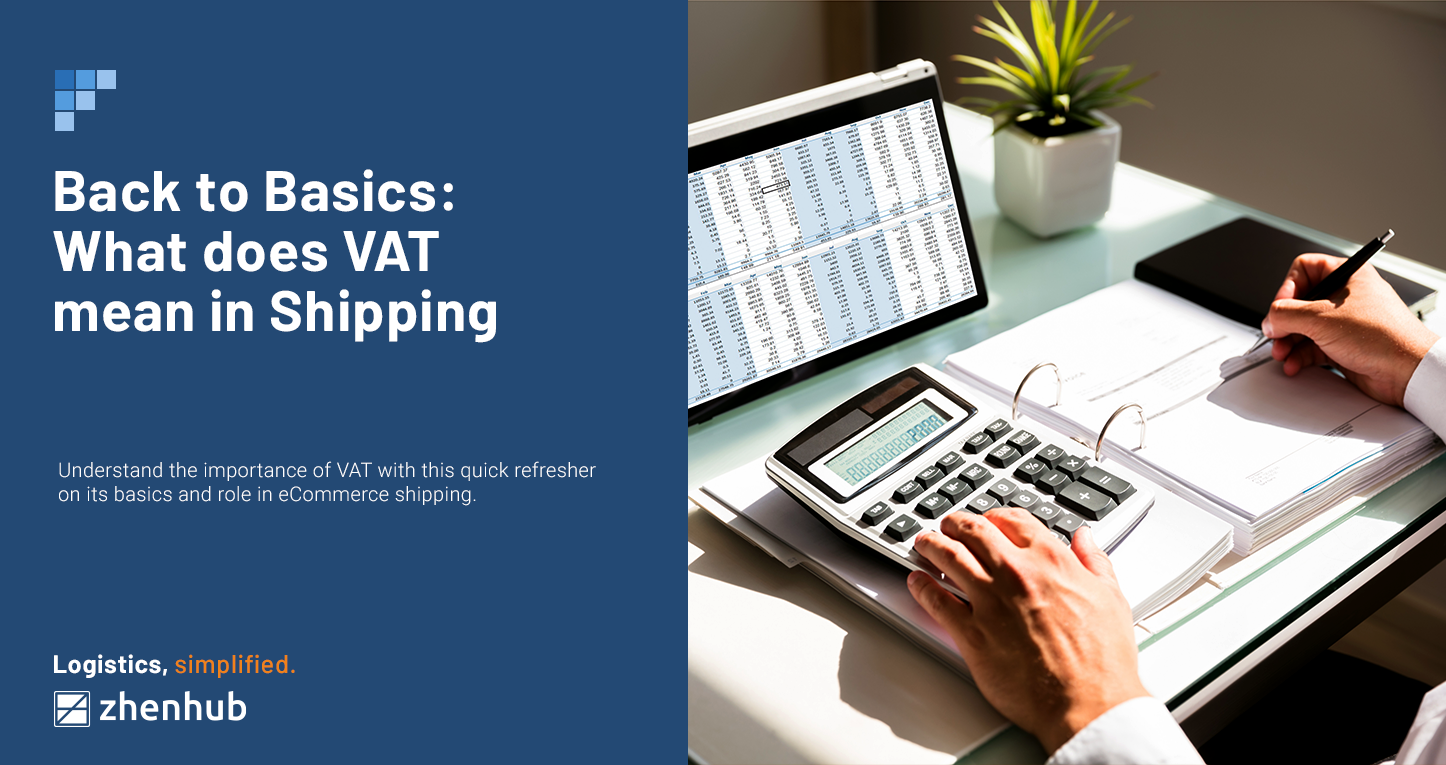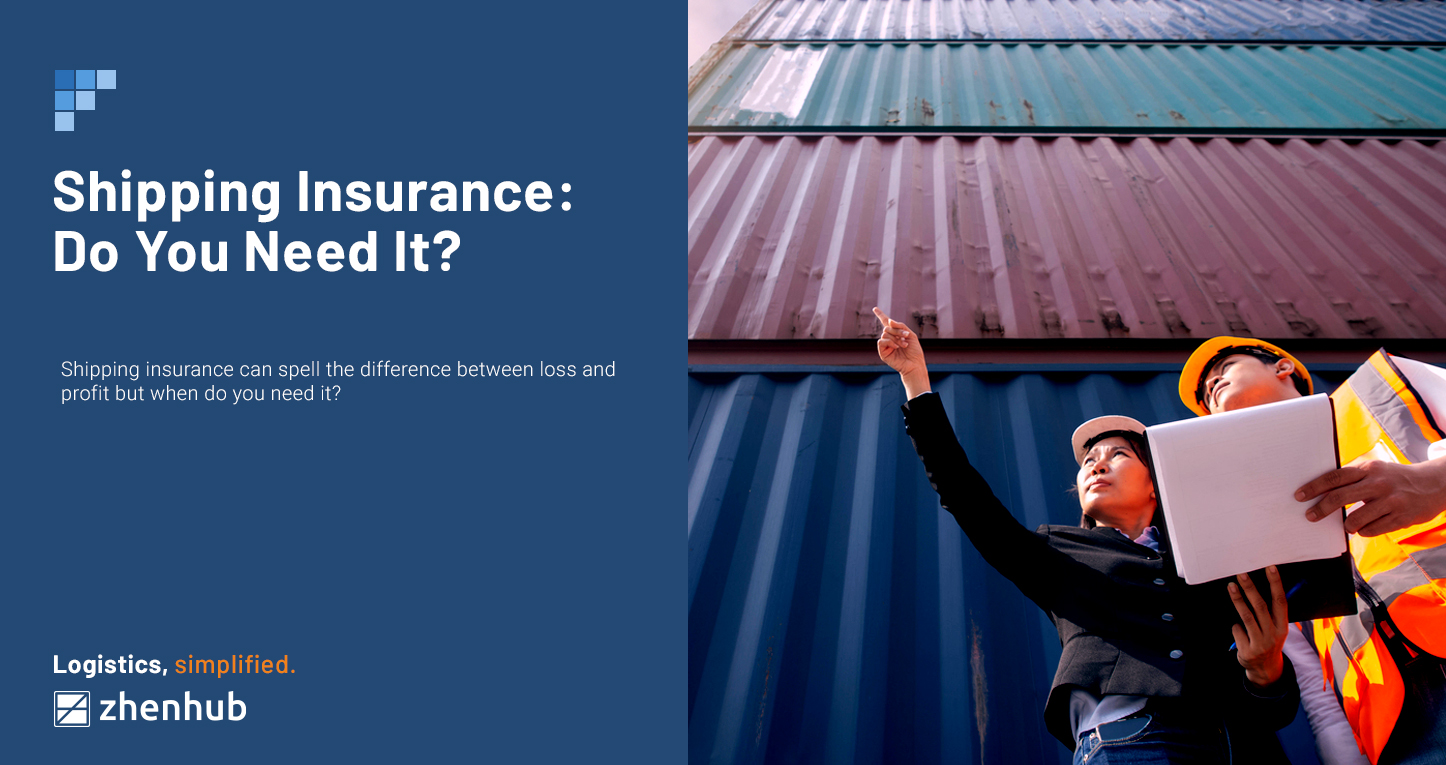
Back to Basics: What is VAT shipping?
Time to read: 4 minutes
Dealing with the intricacies of international shipping taxation can be intimidating, not just for new eCommerce operations but even for seasoned retailers. Different jurisdictions have a variety of tax requirements for import duties and export duties. They also need to deal with higher than usual freight rates which cut margins or get passed to consumers. Likewise, international documents vary from country to country. If you’re a brick-and-mortar retailer or an online one, you’ve dealt with Value-Added Tax or VAT shipping.
VAT shipping is a type of consumption tax that can be difficult to understand, especially for businesses based in the US. Nevertheless, it is essential to modern trade and all eCommerce operations that buy and sell products internationally. This article explores the basics of VAT shipping as well as what VAT means in shipping.
What is Value-Added Tax?
Value-Added Tax is a form of consumption tax paid by the consumer as they purchase goods and services. It’s different from capital gains and income taxes as these are duties charged to individuals as they earn from a salary or investment.
As the name suggests, Value-Added Tax refers to the process of taxing the value added to goods as it moves along the production process. Business owners, eCommerce or otherwise, are responsible for collecting and charging their customers with VAT upon purchase. The amount they collect is then filed to the government during tax season.
It is important to note that VAT and VAT shipping is deductible by businesses but not consumers:
“Since VAT is meant to be neutral for business, they can deduct the VAT they are charged by other businesses against the VAT they charge on their own salesOnly the difference is paid to the tax authorities,” explains Richard Asquith of tax compliance firm Avalara in a feature by the UPS.
When it comes to VAT shipping, the US is part of the minority that forgoes this form of consumption tax. But while the US doesn’t implement it, the entire European Union enforces VAT as well as 100+ other countries across the globe. Different countries have different VAT policies and can be as little as 1% or as high as 27%. Aside from the location, the type of product for sale also determines VAT.
Value-Added Tax in Action
Value-Added Tax can be a difficult concept to grasp for those who are not acquainted with this form of taxation. To truly understand how VAT shipping is charged and paid to the government, it is best to illustrate the concept with an example:
For instance, a vineyard based in France sells grapes to a winery for 1000 EUR a sack. The VAT rate in the country is 20%, so the vineyard charges an additional 200 EUR to the winery to cover the VAT. The vineyard pays the French government the 200 EUR it earned from the winery. Eventually, since VAT is deductible, they can claim the amount back.
The winery then works to create wine out of the grapes they have procured. The winery makes 1500 EUR worth of wine from the batch of grapes. To cover the VAT, the winery sells the wine for 1800 EUR. As they file their taxes, the winery owes the French government 300 EUR minus the 200 EUR it has already paid for the grapes.
VAT versus Sales Tax
Value-Added Tax is a foreign concept for US-based businesses that don’t have a global presence. For retailers in the US endeavoring in an international expansion, it is crucial to note a difference between VAT and the more familiar sales tax.
Sales tax is different from VAT because sales tax is a flat-rate amount charged to the consumer at the end-point of sale. Moreover, sales taxes get subjected to different levels. Transactions in some locations are subject to local, state, and federal taxes. In countries that impose VAT, the rate of VAT applied is the same across the entire jurisdiction.
VAT versus Goods & Services Tax or GST
Goods & Services Tax or GST is more similar to VAT than it is to sales tax. Similar to VAT, the charge gets computed as a product moves along the supply chain. Likewise, businesses can reimburse the amount. However, the main difference with the GST is that it is a flat-rate percentage of the total transaction instead of the percentage of the added value. Countries like Singapore and Australia impose GST on consumers.
General Facts on VAT Shipping Around the World
Different countries charge different percentages of VAT shipping. eCommerce shipping, especially for buying and selling goods internationally, is encouraged to learn about the intricacies of VAT around the world.
At the time of writing, 168 countries have some form of VAT policy. The first nation to impose VAT in France in the 1950s. Hungary currently holds the distinction for having the highest VAT percentage – at 27%.
Depending on the jurisdiction, some countries have VAT shipping exemptions or lower rates for specific products. For instance, in the Netherlands, 28 types of goods enjoy a reduced VAT rate of 6% – a far cry from the 21% standard percentage.
The European Union and Value-Added Tax
The European Union is currently revising its VAT shipping policies to accommodate the shift in the eCommerce trends. At present, businesses have to register for VAT in each country it serves. Moreover, only parcels valued under 22 EUR are VAT-exempted, but that will soon change.
The new policies would introduce a new unified VAT registration system – the OSS. This new system allows retailers to register for VAT for all the 27 member states of the EU. Moreover, the new guidelines increase the tax-exempt parcels to packages valued up to 150 EUR. VAT for these transactions will be charged at the point of sale. These reforms aim to optimize the current VAT processes and minimize instances of VAT fraud.
Handling taxes for international shipment, VAT or otherwise, can be a tedious affair. Regardless of whether you are a seasoned retailer or an up-and-coming eCommerce operation, taking the time to understand VAT shipping on a global scale will be crucial to your company’s success.
ZhenHub has a presence in over twenty countries globally and is well-versed in international taxation rules. We can help your eCommerce operation grow and scale! Take your company to greater heights; request a quote today!


